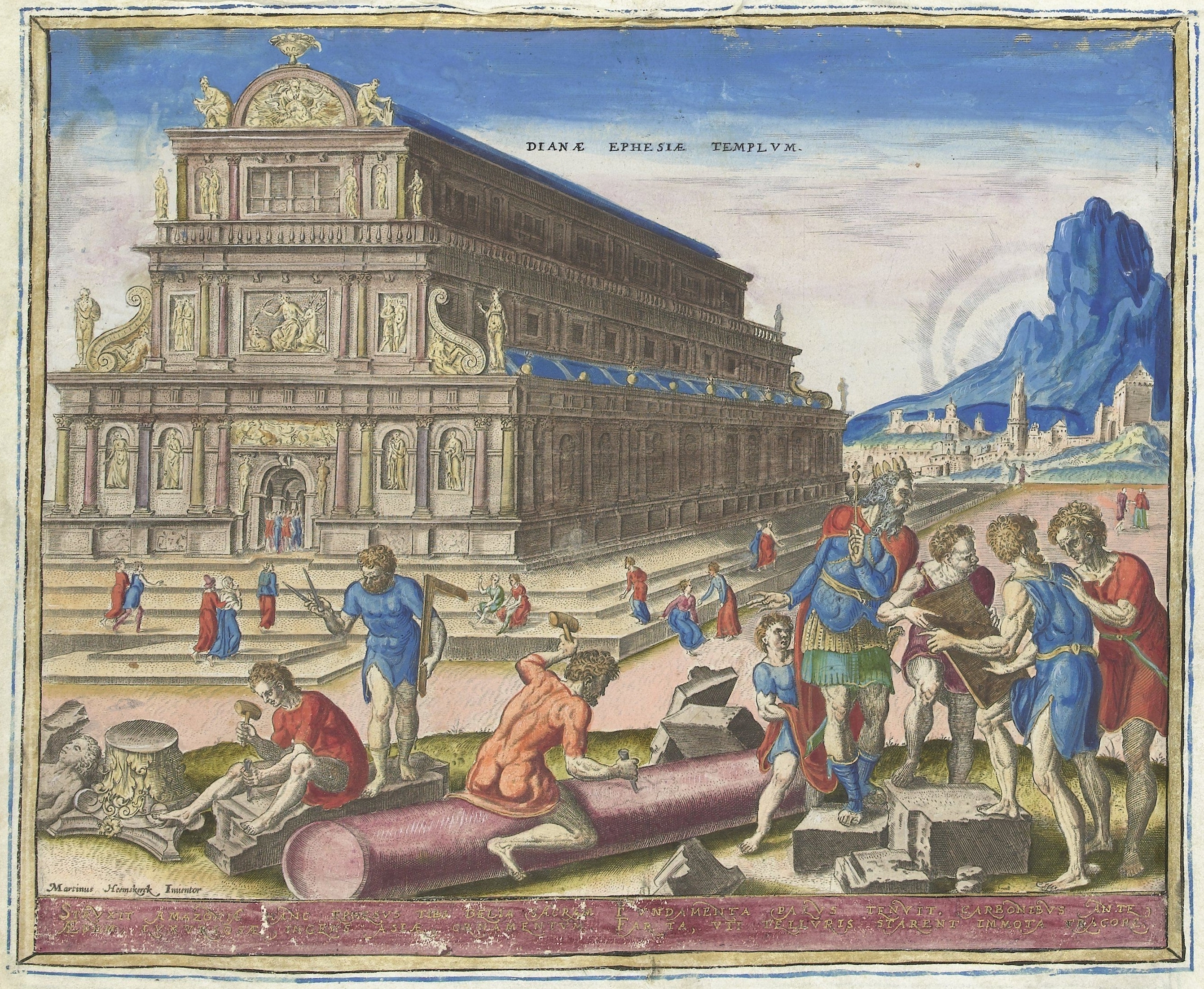We evoke History as a never lived memory; we can almost visualise it and we do so through the lenses of Art—either by ancient ruins that help us to imagine past architectures and lost cities, beautifully carved runes that compose forgotten sounds once spoken, or by paintings and stories of the old masters. Memory is but a message, left long ago; it rarely lasts what remained untold.
Civilisations undertake colossal efforts to pass the barrier of time. Thousands of people through multiple generations lived to erect unforgettable monuments. Today the Pyramids in Egypt still transport you in amazement to the culture and people who built them more than 4500 years ago; they are the single remaining jewel of the Ancient World, the last of the Seven Wonders.
Maarten van Heemskerck was an artist who designed and produced a series of studies on the Ancient Wonders of the World, the best example of everlasting memory. Although usually seven, Maarten added the Colosseum's ruins to the set. Today's work, the Temple of Artemis, was engraved by Philip Galle and based on Heemskerck’s design.
These monuments were built to carry a civilisation's story, though destruction also carries tales of its own. So important is destruction to history that it has a name of it’s own—Damnatio Memoriae: being memory a past message, those who control the message control the past. This is the attempt to manipulate memory by changing the past, erasing or changing its remains, thus controlling the present. Is was largely used both by the Nazi and Soviet totalitarian regimes, but the practice is as old as time.
Once, the name of Herostratus was forbidden to be spoken and erased from all literature and histories. He was meant to be purged into nonexistence as a punishment for the worst of ancient crimes: destroying an Ancient Wonder. He burned the Temple of Artemis, a monument that took generations to erect and would amaze generations to come.
In his short-story, The Destructors, Graham Greene tells us how T. (Trevor), fascinated with a house that survived the WWII bombing of London, sets his gang to destroy it. He was convinced that destruction was, after all, a form of creation. Is it? Perhaps the bigger truth is that if not entropy, change is the only constant: cursed and blessed are those who bring it.
Artur Deus Dionisio


 Philip Galle & Maarten van Heemskerck
Philip Galle & Maarten van Heemskerck